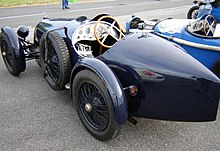The Amilcar was a French automobile manufactured from 1921 to 1940.

The Ford Vedette is a large car formerly manufactured by Ford SAF in their Poissy plant from 1948 to 1954.
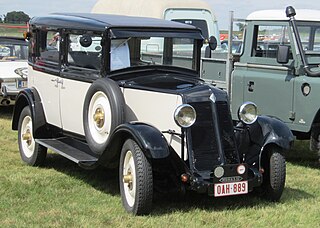
The Renault Monasix was a compact car or small family car manufactured between 1927 and 1932 by Renault.

Chenard-Walcker, also known as Chenard & Walcker, was a French automobile and commercial vehicle manufacturer from 1898 to 1946. Chenard-Walcker then designed and manufactured trucks marketed via Peugeot sales channels until the 1970s. The factory was at first in Asnières-sur-Seine moving to Gennevilliers in 1906. The make is remembered as the winner of the first Le Mans 24 Hours Race in 1923.

The Amilcar CGS Grand Sport was a popular inter war lightweight sports car, manufactured by the French automobile maker Amilcar between 1923 and 1925. A response to the successful Salmson VAL3 series, the "C Grand Sport" was developed from the Amilcar C. The CGS had a longer, more rigid chassis, and improved brakes in addition to its bigger engine.

The Bucciali was a French automobile manufactured from 1922 until 1933.
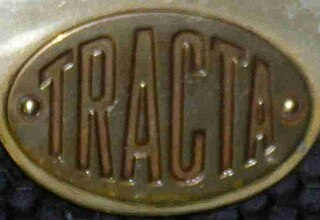
Tracta was a French car maker based in Asnières, Seine, that was active between 1926 and 1934. They were pioneers of front-wheel-drive vehicles.

Salmson is a French engineering company. Initially a pump manufacturer, it turned to automobile and aeroplane manufacturing in the 20th century, returning to pump manufacturing in the 1960s, and re-expanded to a number of products and services in the late 20th and into the 21st century. It is headquartered in Chatou and has production facilities in Laval. It has subsidiaries in Argentina, Italy, Lebanon, Portugal, South Africa and Vietnam.

Corre La Licorne was a French car maker founded 1901 in Levallois-Perret, at the north-western edge of central Paris, by Jean-Marie Corre. Cars were produced until 1947.

Automobiles Rally was a small company which made sporting automobiles in Colombes, a northwestern suburb of Paris. The company traded from 1921 until 1933, but they did not manage to survive the Great Depression. Known for sporting and handsomely designed cars, Rally competed with other French cyclecar makers of the era such as Amilcar, B.N.C., and Salmson.

The Bignan was a French automobile manufactured between 1918 and 1931 on the north side of central Paris, in Courbevoie. The business was created, and till the mid-1920s, headed-up by Jacques Bignan.

Ryjan was a make of French automobile produced by the Grillet company between 1920 and 1926. The factory was established in what was then a small town, a short distance to the west of Paris, called Chatou. In 1925 production was relocated to Nanterre in the west of the country.

Barré was a French automobile manufacturer established by Gaston Barré at Niort. Some sources give the starting date for the business as 1900, although Barré's first automobile was presented in December 1899 at the Paris Motor Show. Production ended in 1930.
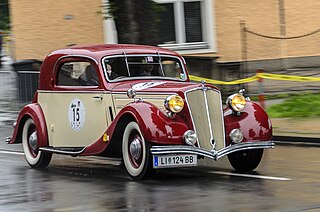
The Salmson S4 is a mid-size executive-level car introduced as the Salmson S4 C by Société des Moteurs Salmson in Autumn 1932. It was the manufacturer's principal and often sole model for the next twenty years.
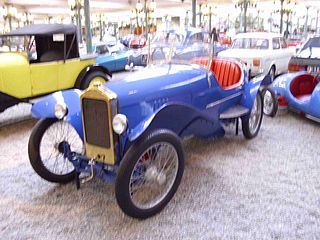
Sénéchal was a French automobile manufacturer between 1921 and 1929.
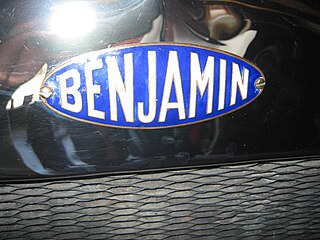
Benjamin was a French manufacturer of cyclecars between 1921 and 1927 and based on the north-west edge of Paris. 1927 was a year of changes which included a name change, and between 1927 and 1929 the company operated under a new name, Benova.

Établissements V. Vermorel was a French engineering business that existed between 1850 and 1965: for more than a century, until the death in 1957 of Édouard Vermorel, it was a family-run business.
Raymond Siran, Cyclecars D'Yrsan was a French manufacturer of automobiles in the cyclecar class.

Majola was a French producer of engines and automobiles, established in 1908 and producing automobiles from 1911 till 1928.

Messier was a French automobile manufacturer, based at Montrouge, on the southern edge of Paris, from 1925 till 1931.


